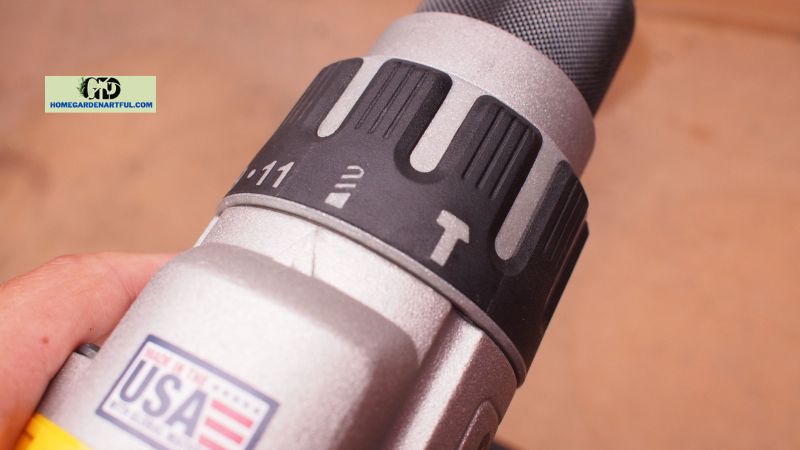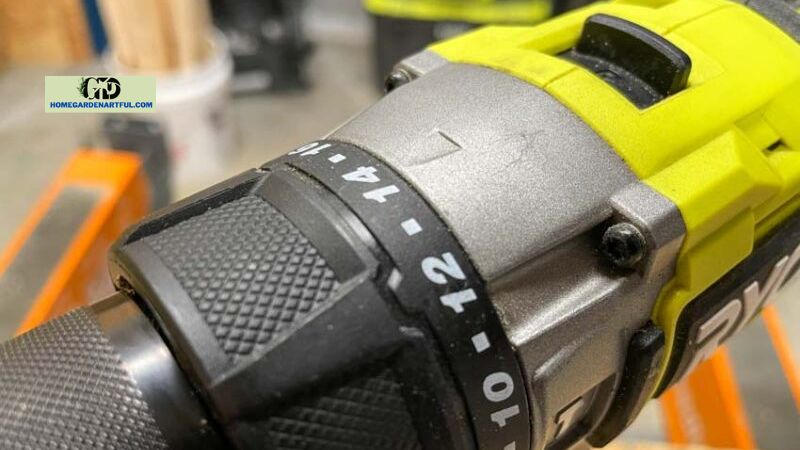What Does The Numbers On A Drill Mean? With so many functions and features on current drills, it can be difficult to grasp what they do and when to utilize them. One example is the number sequence commonly observed near the chuck.
The numbers on the drill clutch represent the various amounts of torque or rotating force applied by the drill before disengaging. This feature allows you to customize the torque to the task at hand. Other switches in some drills can also control the provided torque. This article from homegardenartful.com analyzes the numbers and icons present on a drill and explains their purposes so that you may work with your drill with confidence.
What Does The Numbers On A Drill Mean?

So, What Does The Numbers On A Drill Mean? The majority of drills have two significant sets of numbers. They are the torque and gear selection settings.
Torque Setting
The torque setting on a drill is often positioned near the clutch, although in some models, it may be located elsewhere. You can rotate it and set it to a specific value in relation to the indicator.
- These figures indicate how much torque or force the drill will exert when turning an object, including a screw, or drilling a hole.
- It is not required to know the precise torque value for each number. Note that a higher number indicates a greater rotating force.
- This function prevents stripped screws and enables drilling through tough materials such as metal, wood, and concrete.
- Typically, the range is from 1 to 20, with 1 being the weakest and 20 being the strongest. Some drill models, depending on the manufacturer, may have a range greater than 20.
- Before beginning a project, check the drill torque to understand its power as well as how well it handles.
- Excessive torque can shred screws, while insufficient torque might make the job tiresome.
- Regular use and testing will help you get more familiar with the settings, making it easier to select the optimum torque setting for each project.
- Some contemporary drills include torque setting icons at the end. These are utilized to choose between drilling modes.
Gear Selection
The gear settings on a drill control the rotational speed. A greater number indicates that the drill will spin quickly. The majority of drills have 2 gears, although some have three.
- When you squeeze the drill’s trigger, the torque setting dictates how many spins it can perform in a minute based on the number you select.
- Each gear is represented by a number. Number one is for high torque with a low speed, which is ideal for screwing and fastening.
- The second setting is for medium torque along with medium speed, which is ideal for deep driving and drilling.
- The third position is for low torque and high speed, which is ideal for advanced drilling.
- If your drill has only two gears, the second is for high torque and low speed.
- Change gears when the drill is running to avoid damaging the machine. Before changing gears, wait for the drill to completely stop revolving.
Other numbers
- There are other numbers to consider while using a drill besides the torque and gear selection parameters.
- The thread count on a screw or bolt is the number of threads per inch and can be used to select the appropriate tap or die when threading the hole.
- The gauge number also defines the thickness of the web that links the tip to the shaft. A thinner web is indicated by a higher gauge number.
How to Use a Drill’s Torque Settings

The technique for utilizing a clutch on a drill is rather straightforward, and because there are no “preset” requirements for the amount for each number offered, and because each manufacturer and type of drill will differ, the process is fairly basic and will work for practically every drill.
- Get a sample of the material you’ll be working with and secure it so it doesn’t move around on you.
- Set the clutch to the middle of the road. Set it to 6 if you have 12 clutch settings; if you have 24, set it to 12; and so on.
- Drive a fastener into the sample piece of material to check how far it goes.
- Adjust the clutch setting as needed. If the fastener did not drive flush into the sample board, raise the clutch setting; if it dug into the material, lower the clutch setting.After you’ve determined the right clutch setting, you should test it with another 3 to 4 fasteners to ensure that it works several times before utilizing it for “the real deal.”
Is Every Drill the Same?

Drill drivers are not all the same, and many different models have varying torque settings.
This makes comprehending the torque settings more complex, as well as increasing variation and making it more difficult to identify a standard measure to go by.
This is quite different, and because each drill has a different maximum inch pounds of torque, it is difficult to claim that a number one setting is XX amount of inch-pounds, a number two setting is XX amount of inch pounds, and so on.
This is only true if you compare numerous distinct drills and their designated clutch settings together. Each clutch maker has a unique setting for each assigned number.
Conclusion
So, What Does The Numbers On A Drill Mean? The numbers on a drill might assist you in making an informed decision. Take note of the voltage; it represents the power. Higher voltage drills are more powerful and appropriate for more difficult tasks. RPM stands for revolutions per minute and influences drilling speed. Higher RPMs imply faster drilling. The torque rating is a rotating force measurement, and higher ratings indicate more drilling power. Some models also include adjustable features. Consider the numbers and how they relate to your requirements. It can save you time and effort while producing better outcomes!


